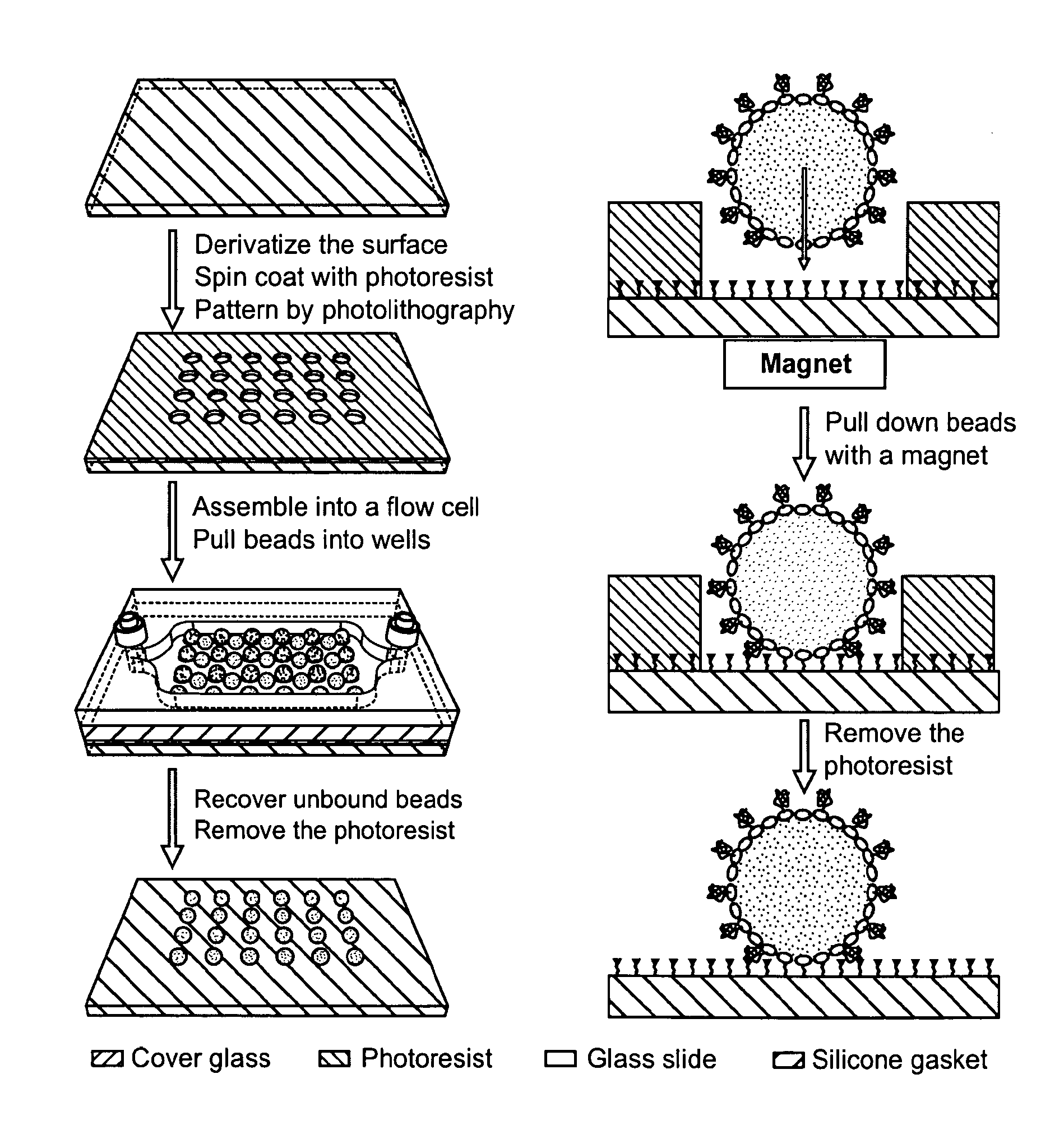Methods and devices for biomolecular arrays
a biomolecular array and array technology, applied in the field of biomolecular array methods and devices, can solve the problems of low throughput and imaging efficiency, high reagent cost, complicated image processing, etc., and achieve the effect of high density and biomolecular density
- Summary
- Abstract
- Description
- Claims
- Application Information
AI Technical Summary
Benefits of technology
Problems solved by technology
Method used
Image
Examples
examples
Chemical Derivatization of Glass Surfaces
[0125]50×75×0.170 mm3 borosilicate glass cover slips (Erie Scientific, Portsmouth, NH) were washed with a detergent solution and rinsed with 18 M-Ohm / cm de-ionized water. They were further cleaned by soaking in methanol and then acetone for 5 minutes each in an ultrasonic bath and dried in a convection oven at 110° C. for 10 minutes. The cover slips were then soaked in a 2 M nitric acid solution for 30 minutes at room temperature and rinsed with de-ionized water. Silanization was performed using a 2% solution of 3-aminopropyl-triethoxy-silane (Gelest Inc., Morrisville, Pa.) in 95:5 acetone: water for 15 minutes at room temperature. The cover slips were then rinsed 3 times with acetone and cured at 110° C. for 15 minutes in a convection oven. A 1 mM solution of N-hydroxylsuccinimidyl-PEG-biotin, MW 5000 (Nektar Therapeutics, San Carlos, Calif.) in dry N,N-dimethylformamide with 1 mM triethylamine was prepared and 300 uL was spotted onto each c...
PUM
| Property | Measurement | Unit |
|---|---|---|
| diameter | aaaaa | aaaaa |
| diameter | aaaaa | aaaaa |
| wavelengths | aaaaa | aaaaa |
Abstract
Description
Claims
Application Information
 Login to View More
Login to View More - R&D
- Intellectual Property
- Life Sciences
- Materials
- Tech Scout
- Unparalleled Data Quality
- Higher Quality Content
- 60% Fewer Hallucinations
Browse by: Latest US Patents, China's latest patents, Technical Efficacy Thesaurus, Application Domain, Technology Topic, Popular Technical Reports.
© 2025 PatSnap. All rights reserved.Legal|Privacy policy|Modern Slavery Act Transparency Statement|Sitemap|About US| Contact US: help@patsnap.com



